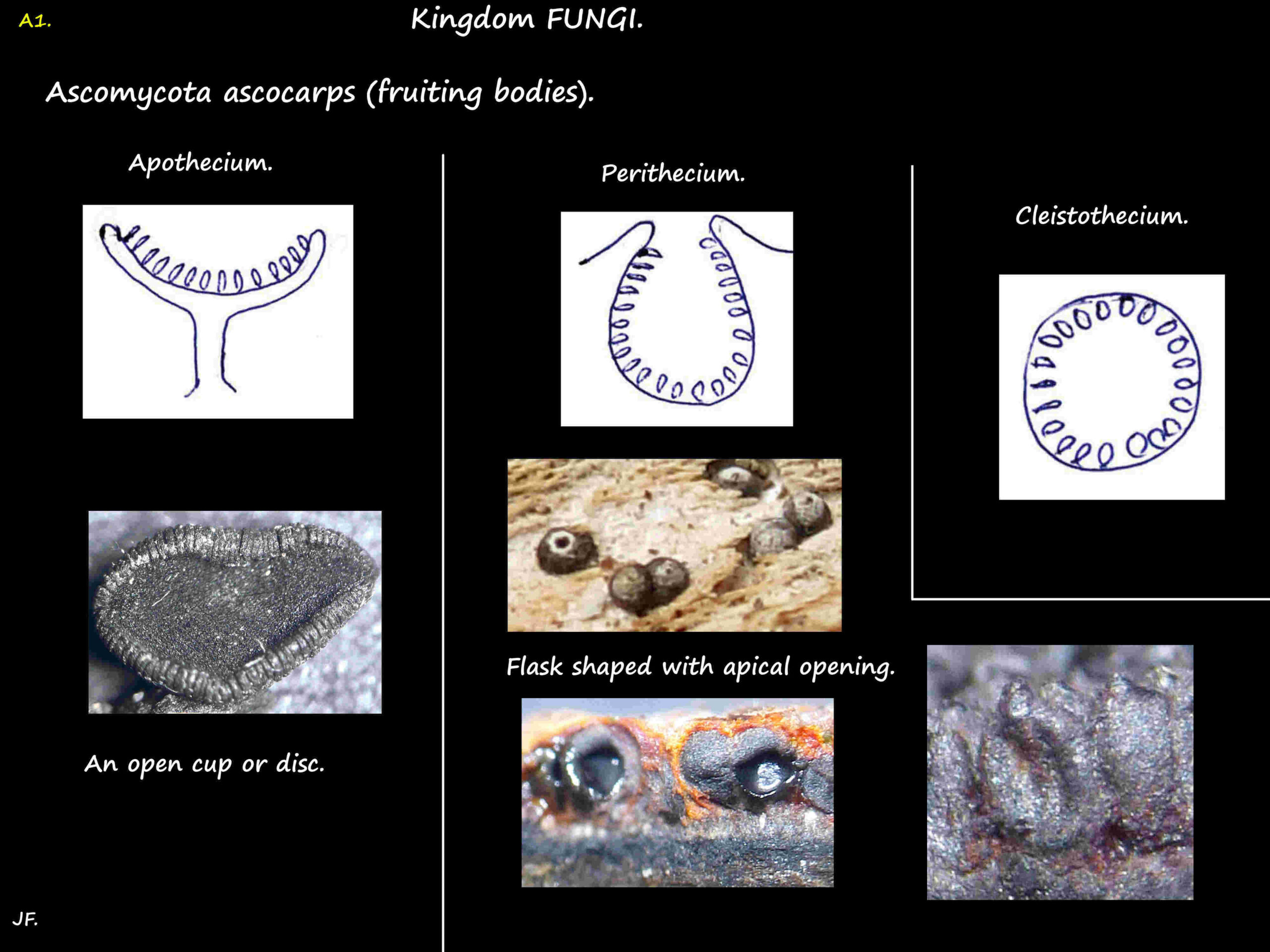Ascomycota – cup and flask fungi.
Kingdom Fungi > Division Ascomycota > Class Sordariomycetes > Subclass Xylariomycetidae > Order Xylariales.
This group, descended from one common ancestor, is said to contain about 75% of all known fungi.
The number of species varies from 30,000 to over 60,000 and the majority have probably not yet been identified.
They are a diverse group ranging from single celled yeasts to macroscopic fungi such as mushrooms.
The single celled yeasts, which reproduce by budding, will not be discussed.
Most of the rest have a permanent vegetative stage composed of fine threads or hyphae which collectively form a mycelium.
This is normally not seen as it is in the substrate.
The exceptions are those species which are a component of the lichens.
The temporary, visible part is the reproducing fruiting body or ascocarp.
Ascocarps come in all shapes, sizes, textures and colours.
They carry the asci where the ascospores are produced.
The ascus is the defining feature of the Ascomycetes.
It is a microscopic structure and each usually produces 4 or 8 spores.
There are 2 main forms of fruiting bodies or ascocarps:
1. An apothecium is a wide, open cup or disc-shaped structure.
Its upper surface is lined with spore producing asci that are exposed to the environment.
Cup and disc fungi is a generic term used to describe these fruit bodies.
They may be shallow or deep, sessile or stalked, from less than 1 mm to a few centimetres and in various colours.
This type of fruit body occurs across a number of Ascomycete families.
2. A perithecium is a flask-shaped structure lined with asci, the spores being released through a small opening at the top (the ostiole).
Many members of the Xylariales have this type of fruit body.
A less common type is the Cleistothecium – a closed, spherical structure such as truffles.
Ascomycetes are usually divided into 3 groups;
1. The Taphrinomycotina is a mixed group containing the earliest species.
2. The Saccharomycotina contains the single celled yeasts, such as Baker’s yeast and the common human pathogen Candida.
It includes the powdery mildews, morels and truffles.
*******************************************************
Order Xylariales.
Domain Eukaryota > Kingdom Fungi > Division Ascomycota >Order Xylariales.
There are 22 families with 164 genera and a long list of unplaced genera.
The most commonly seen are the Diatrypaceae and Xylariaceae families.
Most species have black, carbonaceous bodies which often give the appearance of a tarcrust or burned wood.
Single peritheca may occur in groups or many may be closely combined in a common stroma.
Spores are produced by asci lining the walls of the flask-like peritheca.
The Xylariales can be very confusing to identify.
The species in a particular genus can be very different, very similar species occur in more than one genus, family or even another order.
As species and genera have been moved around the name changes are not always recognised.
There are a few distinctive genera such as Daldinia.
Family Diatrypaceae includes the often macroscopically similar Anthostoma, Diatrype and Diatrypella.
Family Xylariaceae includes Annulohypoxylon, Daldinia, Hypoxylon, Kretzschmaria and Xylaria.
Very common they are seen as plant pathogens while others live on dead wood. It is a diverse group.
J.F.


